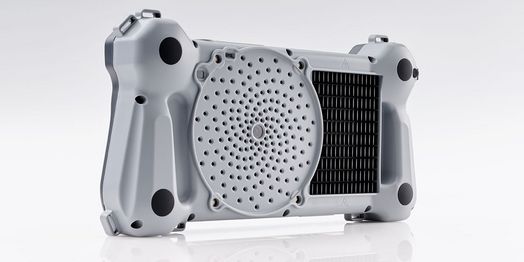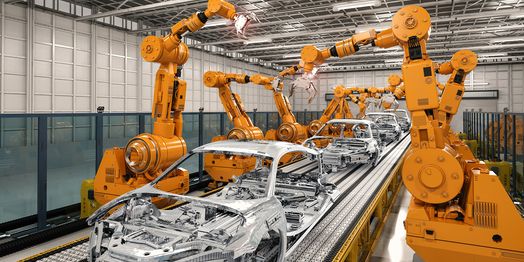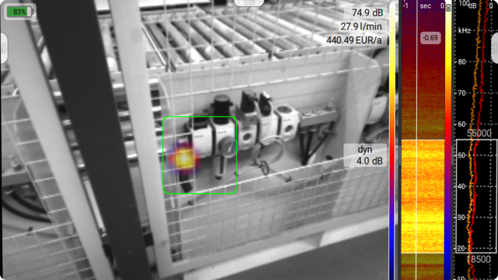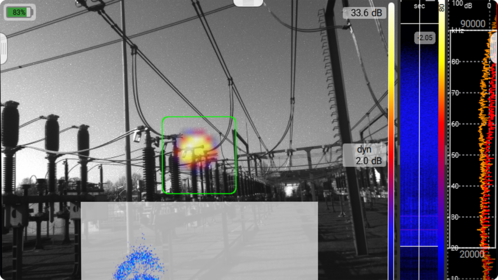Acoustic Camera for Sound Source Localization
Leverage advanced beamforming technology and thermal imaging to locate acoustic signals in both audible and ultrasonic frequency ranges. The acoustic camera enables precise leak detection in compressed air systems and fault identification in electrical systems.
✓ Applications, demo and pricing
- Ideal tool for efficient preventive maintenance
- Visualize sound emissions in real time with acoustic images and videos
- Detect leaks and partial discharges early and avoid costs and failures
- Increase your energy efficiency, operational safety and system reliability
Discover our SONASCREEN® series and revolutionize your preventive maintenance processes!
Advantages of Acoustic Imaging Technology for Preventive Maintenance
Areas of Application
Ultrasonic Leak Detection
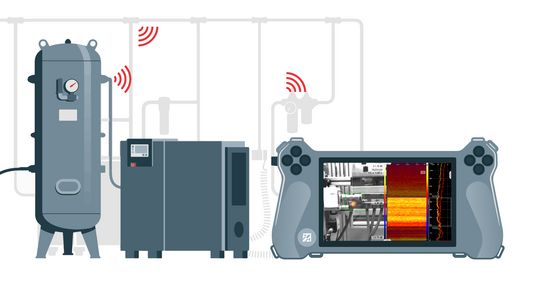
Industrial acoustic imaging cameras are your optimal companion to cut energy costs, reduce your CO2 emissions and support you in energy audits.
- Detect and visualize leakages in industrial environments
- Save an average of 35% on energy costs in compressed air systems
- Free software for leakage loss assessment and PDF reports for energy audits
Partial Discharge Detection with Ultrasound
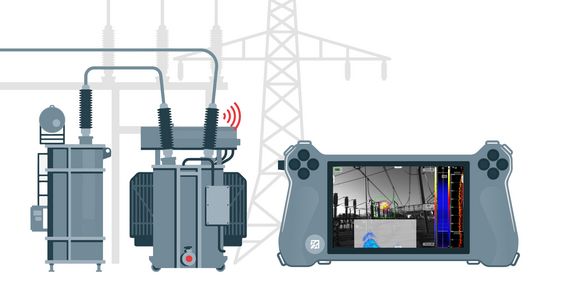
Industrial acoustic imagers help you detect and distinguish corona, tracking, and arcing faults early on. They work across all voltage levels and are ideal for inspecting both open and closed electrical systems, including control cabinets, switchgear, relays, transformers, insulators, and more.
- Detect partial discharges at their earliest stage
- Ensure equipment reliability and safety
- Free software for evaluation of electrical partial discharges and PDF report creation
Upgrade your preventive maintenance processes with our acoustic cameras
Our Acoustic Cameras combine multiple technologies for optimal defect detection
Acoustic images from the audible and ultrasonic frequency range
Acoustic imaging cameras localize sound sources using beamforming and visualize complex acoustic information as acoustic images or videos. With its high dynamic range and the real-time visualization of defects with 100 frames per second, our SONASCREEN® 2 is the most advanced acoustic camera on the market, while also being simple, intuitive and fast.
Hear inaudible ultrasound emissions and detect damage and faults
In addition to the visual results, the camera provides acoustic feedback via a hearing protection headset, so users can quickly locate sound sources in their surroundings visually and evaluate their acoustic characteristics at the same time.
Combination of acoustic and thermal imaging with infrared
The built-in IR module allows the combination of acoustic and thermal imaging, which enables a deeper understanding, as well as a more comprehensive diagnosis and analysis of recorded events.
Acoustic imaging is a technique that transforms sound signals into visual images. Put simply, it lets you see sound.
Defects such as gas leaks or partial discharges often generate ultrasonic sounds that are inaudible to humans. Acoustic imagers are equipped with a large number of microphones to detect and precisely localize these signals. The acoustic image of the sound source generated by the microphones is combined with a camera image of the visible surroundings, for example within an industrial plant. By visualizing the recorded sound signals, ultrasound cameras make defects in compressed air systems or electrical systems visible, turning them into valuable tools for preventive maintenance.
An acoustic image or video provides a visual representation of sound. Typically, the acoustic image is layered on a visual image for context, allowing you to see the location and intensity or loudness of sound sources within the field of view in real-time. Besides, the acoustic camera provides information about the frequency components of the sound, helping to distinguish between different types of noise or sound emissions.
An ultrasound camera uses a microphone array consisting of many individually arranged microphones. This allows the camera to capture sound waves from different directions. Using beamforming, the acoustic camera can control the directional characteristic of the microphone array. This means that the camera is able to focus sound from a certain direction and suppress sound from other directions. The beamforming technology therefore enables the camera to display the exact position of sound sources on a visual map - the acoustic image. This is done by analyzing the differences in the time of flight of the sound waves between the microphones. The acoustic image then shows where the sound is coming from and how intense it is.
Do you have any questions?
Feel free to contact us! We will be happy to help you.

